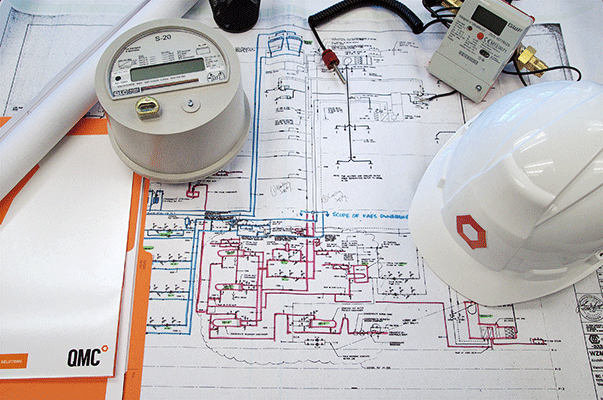
Recently Canadian Apartment Magazine published an article (subsequently posted online on REMI Network) that looked at the increasing interest of CHP (Combined Heat and Power) from the multi-family building sector. Cogeneration can be explained as “the simultaneous production of electrical and thermal energy from a single fuel source”. Cogeneration can provide reliable power while redirecting ‘waste heat’ back into the building as useful energy. Although interest is growing in Canada for this energy-saving, clean technology, its adoption has not been without challenges. One challenge these systems face is the ability to effectively measure and bill thermal energy consumption to end consumers. Additional context in the CPM cogeneration / CHP article came from a sidebar with insights from QMC. We offered some of our findings from our recently released White Paper on the topic: Thermal Energy Metering: Regulations and Best Practices for the Canadian Market.
“Cogeneration in Canada is no longer just for hospitals and industrial facilities – multi-residential property owners are beginning to take note of this energy savings technology, too. Defined as “the simultaneous production of electrical and thermal energy from a single fuel source,” cogeneration is a reliable way to produce power while redirecting ‘waste heat’ back into the building as useful energy.”
Click here to read the Canadian Apartment Magazine article, March 2016: ‘Off the Grid, On the Money’
Thermal Energy Metering: Rewards and Risks
Thermal energy (which includes district energy utilities, hydronic systems, geothermal and CHP), is becoming an increasingly popular way to heat and cool buildings. When implemented with sub-metering technology, it provides a way to accurately measure consumption and encourage conservation.
One challenge these systems face is the ability to effectively measure and bill thermal energy consumption to end users. The Canadian market sees growing demand for sub-metering thermal energy and appears to be following recommendations from groups, such as The Pacific Institute for Climate Solutions, who have recommended thermal sub-metering as a means to achieve energy conservation and cost control.
Challenges and risks
There are challenges and potential risks for real estate developers, however, because of a lack of government standards for measuring thermal energy. Thermal energy is more complex to measure than other utilities and requires specialized equipment and expertise. Further, it is currently not regulated by Measurement Canada—although they have indicated their awareness and potential support for best practices adopted from Europe and elsewhere. Real estate developers need to be aware that best practices, technology, and expertise from Europe is available in Canada. If the right methodology is not adopted, developers run the risk of using technologies that won’t enable equitable cost allocation and billing practices for a user-pay system.
To minimize potential risk in investments, here are four factors developers and other stakeholders must consider:
- Will the measurement methodology selected meet current and future regulations within Canada?
- Is the methodology utilized by more mature thermal energy markets, such as Europe?
- Can the methodology stand up to scrutiny if an end-user (tenant) disputes their bill? What international standards or hardware can you direct them to that will ease their concerns?
- Will the methodology be delivered by an appropriate provider who will correctly specify, deploy, manage, and bill from the system in the long-run?
Click here to read more about thermal energy metering solutions.
Here is a recent blog on the topic: Three reasons why thermal energy meters makes sense